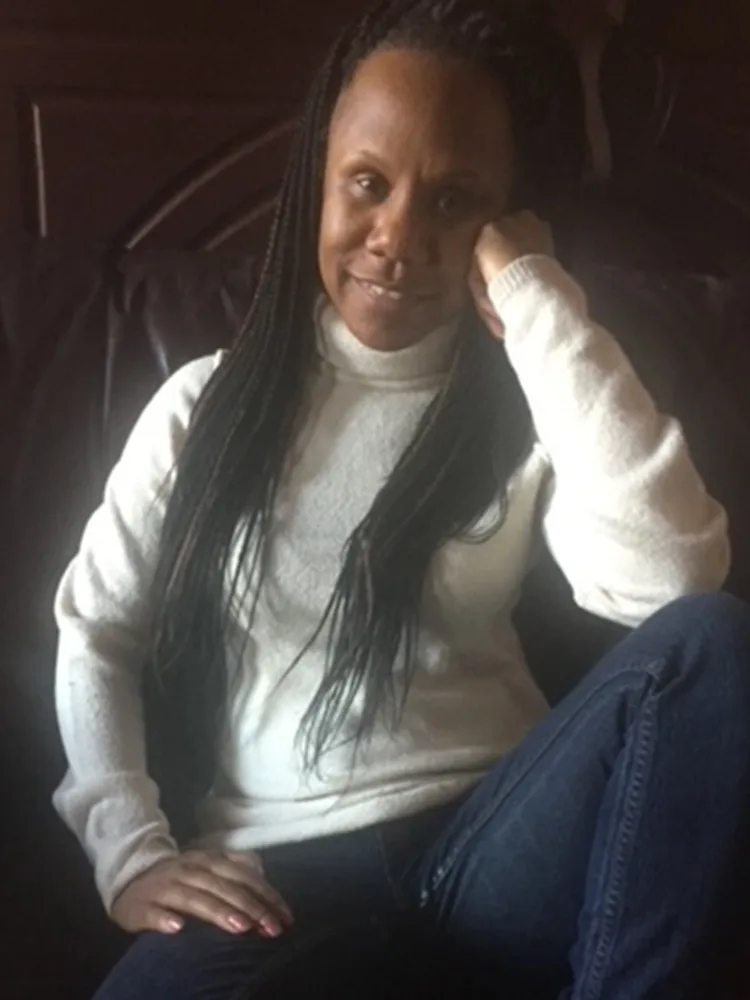Some studies suggest that progression can occur twice as fast in
Black or African Americans versus white people.
Living With Multiple Sclerosis
Race can play a role in how you perceive MS, including if you see yourself reflected in your diagnosis.
When Ann Marie Johnson was diagnosed with relapsing-remitting multiple sclerosis 20 years ago, she learned all she could about the condition. That included going to events, like conferences and educational forums, where MS was discussed. One thing she noticed right away: Rarely did anyone in the room look like her.
Photo courtesy of Ann Marie Johnson
“When I received my diagnosis, I immediately wanted to find out, what is this going to look like for me—especially as a Black woman?” says Johnson, who lives in New York City. “There wasn’t much literature regarding MS within the Black community. I didn’t see people like me. And if I did, I saw a very few.”
Where was her MS community? Answering that question led her on a quest that continues today. Now an MS advocate who seeks to raise awareness about the disease in the Black community, Johnson has run MS support groups, written on the topic, spoken on the topic, and helped in government relations on the topic, all to help people of color know what’s possible with the chronic condition and feel less alone—which is how she felt after she learned she had the disease.
“I don’t ever want anyone to feel the way I felt,” she says.
Over the years, she’s gone from wearing five-inch heels to a wedge, to using a cane. Part of raising awareness has been showing others what it’s like living with multiple sclerosis, she says, especially in light of the more aggressive outcomes observed in Black MS patients. “People have their own idea of what disability is supposed to look like, and more importantly, people have judgment if a person is disabled,” she says. “Let’s change that mindset through visibility and education. As a Black woman, if I can show and represent the strength that actually comes from living with MS, that in itself can help that next person with MS.”
While Johnson’s diagnosis was fairly quick, she’s heard from other people of color that it took months or years to learn they had MS. “I hear the stories of people that live in underserved areas, and how the only type of care that they’re getting is a primary care doctor,” she says. “Their primary care doctor does not listen when they’re describing certain things. It’s moments like that, that got me doing what I do.”
The availability of support groups for people of color has improved since Johnson was diagnosed two decades ago. (Support groups specifically for MS patients of color include African-Americans with MS Self-Help Group, Women of Color with Multiple Sclerosis, and We Are Ill.) “I remember when I typed in those two words, multiple sclerosis, I didn’t see anyone like me. I didn’t see anything that gave me much hope,” says Johnson. “Today, you will see us. You will see that not everybody’s in a wheelchair. That not everybody’s using a cane. Some of us wear heels, some of us wear flats. Some of us wear braids, some of us have beautiful afros. But it’s us.”
Read complete article, found here
Stay informed with MS news and information - Sign-up here
For MS patients, caregivers or clinicians, Care to chat about MS? Join Our online COMMUNITY





